Cat hairballs are common among kittens; however, they can be a matter of grave concern for their owners. Hairballs are formed when the cats groom themselves, as they prefer staying neat and tidy. At times cats can ingest these loose hairs, which amasses in their stomach and are pushed out of the body through vomiting.
While cat hairballs are a natural or habitual part of the cat’s grooming process, they may feel uneasiness, irritation, and blockage in their digestive system due to buildup. As a cat owner, you must know the right tricks to deal with cat hairballs to prevent health hazards. In some cases, the cat hairballs can be pretty gigantic, which makes it impossible for your furry friend to vomit them out, leading to severe intestinal obstruction.
Read More: Understanding Gastric Stasis in rabbits. How to treat a sick rabbit at home?
Have you caught your cat vomiting on your favorite rug? Are you worried that your cat might choke due to an ingested hairball? Well, do not worry, as in this article, we have jotted down the right ways to manage and prevent the accumulation of hairballs in your felines. After all, we love your cat as much as you do.
What is a Cat Hairball?
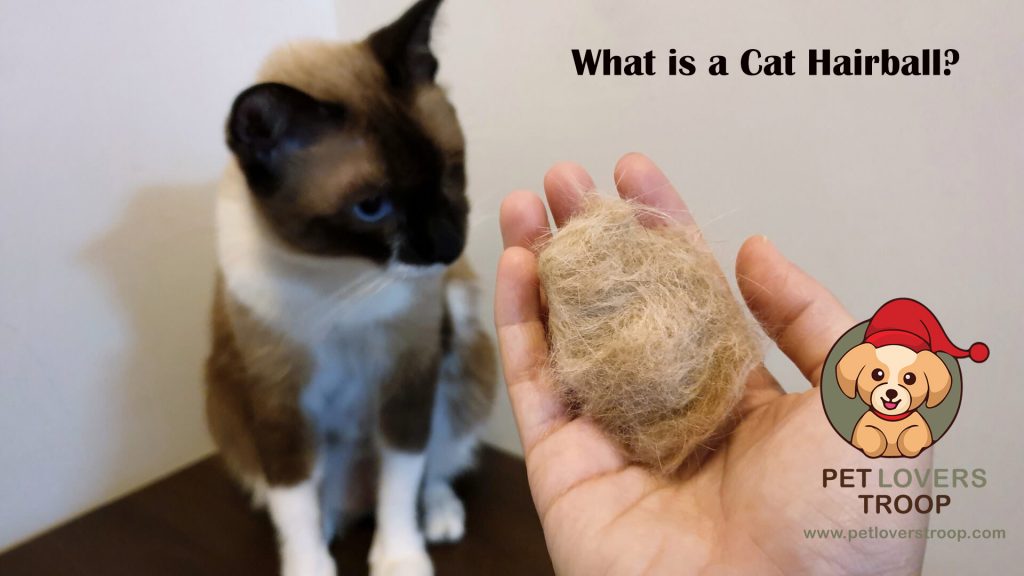
A cat hairball, also known as a fur ball or trichobezoar, is a chunk of hair that usually builds up in a cat’s stomach due to its regular grooming processes. Cats typically use their tongues to remove excess loose hair from their bodies, which is then swallowed and accumulated in their stomach.
A cat’s digestive tract can pass only small amounts of hair, and the rest creates an obstruction. With time, these buildups form a clump of hairballs in their stomach or the esophagus, which is then released from their bodies through vomiting.
Read More: Dirty fish tank: How to maintain your fish tank’s hygiene and health?
It is usual for cats to release hairballs; however, frequent or excessive vomiting can be an underlying sign of a severe health issue. In such cases, contacting a vet without delay is important, as these hairballs can make your cats uneasy or uncomfortable.
What Do Cat Hairballs Look Like?
The term hairballs give the impression of being round; however, they are shaped more like a sausage or a cigar. There is no specific size of a cat hairball, but mostly their size varies from an inch to five inches long.
Symptoms of Hairball in Cats

Cleaning cat hairballs that are usually released in the form of vomiting can be an awful and uncomfortable experience for the owner. Also, cats do not have hairballs when they are just kittens and become more adept groomers as they grow older. Some common symptoms of hairball in cats include:
- Vomiting, retching, and gagging as they struggle to take out the hairball
- Lethargy and stress
- Loss of appetite
- Frequent coughing
- Constipation or difficulty in passing stool
- Diarrhoea
Why Do Cats Get Hairballs?
Well, during the cat’s grooming process, they typically use their tongue and ingest fur, which later travels down from their throat to their digestive tract and mixes with other digestive liquids and bile. Most of this buildup excretes out of the body in feces; however, some remains in the digestive tract and takes the shape of a hairball or trichobezoar clump.
If a hairball remains in the stomach for too long, it can mineralize and increase in size, making it difficult for the cat to pass it out independently. This buildup needs immediate medical attention, as it can lead to intestinal blockage or severe constipation in the cat.
Read more: Best Dog workouts: Fun daily exercises for your pup to keep them hale and hearty
Besides, cat hairballs can also be a sign of an underlying medical condition such as hyperthyroidism, gastrointestinal diseases, or bowel disease. Consult your vet to rule out any possibilities of these underlying medical conditions.
How to help your cat pass a hairball?
Cats occasionally struggle to pass out hairballs and may require help. In such a case, hairball remedies can be your ultimate savior in distress. Lubricate your cat’s paw with petroleum jelly or add a hairball gel to their daily diet. These pastes, oils, or gels may act as a laxative, allowing your cat to pass the excess hairballs easily.
Read More: Litter Box Training: Tips and Tricks to Successfully Introduce Litter Box Your Feline
You can also give them feline stool softeners available in the local store. These meds instantly provide quick relief to your cat. Besides, digestive supplements such as probiotics and enzymes can be effective too. Herbs like slippery elm, licorice, or marshmallow root can aid in reducing inflammation, lubricating their digestive tract, and improving their coat’s quality. Try to incorporate a high-fiber treat or cat grass in their diet, as fiber intake can prevent the formation of hairballs.
What to do if your cat is choking?
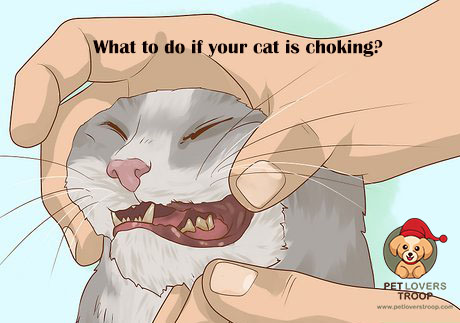
When a pet emergency occurs, it is crucial to act quickly. At times, your cat might choke due to an ingested hairball. However, choking typically results from swallowing a foreign object such as food, plastic toy, or hair tie that gets stuck in your cat’s throat.
Observe your cat’s behavior closely to determine whether they are choking or facing difficulty breathing due to a hairball. Some signs of choking may include coughing and pawing at the mouth. Try and speak to your cat in a soothing voice to calm them down.
Read More: Beginners guide to choosing the right birdcage
To remove the obstruction or hairball, you can follow the steps mentioned below:
Mouth sweep
Open your cat’s jaw and sweep her mouth with the help of your index finger. Gently pull her tongue forward and thoroughly check her throat to see if there is an obstruction. You can now move to the second method if you don’t see any blockage.
Cat Heimlich
Hold your cat where her back is against your chest and her feet are hanging. With your hand’s help, push on her belly in quick upward thrusts and repeat the process at least five times. If these blows are futile, hold your cat by her back hip with her neck down and gently sweep her mouth again. If you have dislodged the object, take your cat to the nearest vet.
Is Your Cat Throwing Up Hairballs Daily?
Typically cats do not throw hairballs daily.
On average most cats through hairballs at least once or twice a month. However, if it happens frequently, your cat might have an underlying medical condition. Frequent hairball vomiting indicates that your cat is ingesting more fur during grooming, which could be due to a GI disease, allergies, or a skin condition.
Hairballs can rarely be a problem unless your cat shows severe symptoms such as frequent vomiting and coughing, lethargy, loss of appetite, weight loss, bloating, or constipation. Remember that a blockage in the digestive tract can be life-threatening if left unchecked. It is important to take your cat to a vet if they exhibit any of the above-mentioned symptoms. The vet will then determine if they need surgical intervention or could be treated at home through regular grooming, hydration, lubrication, and a high-fiber diet.
How to prevent hairballs in cats?
Preventing hairballs in your feline requires a well-thought-out plan that includes their overall grooming, dietary requirements, and lifestyle changes. Here are some tips that you can keep in mind to help you reduce and manage the frequency of cat hairballs without any hassle:
Regular grooming
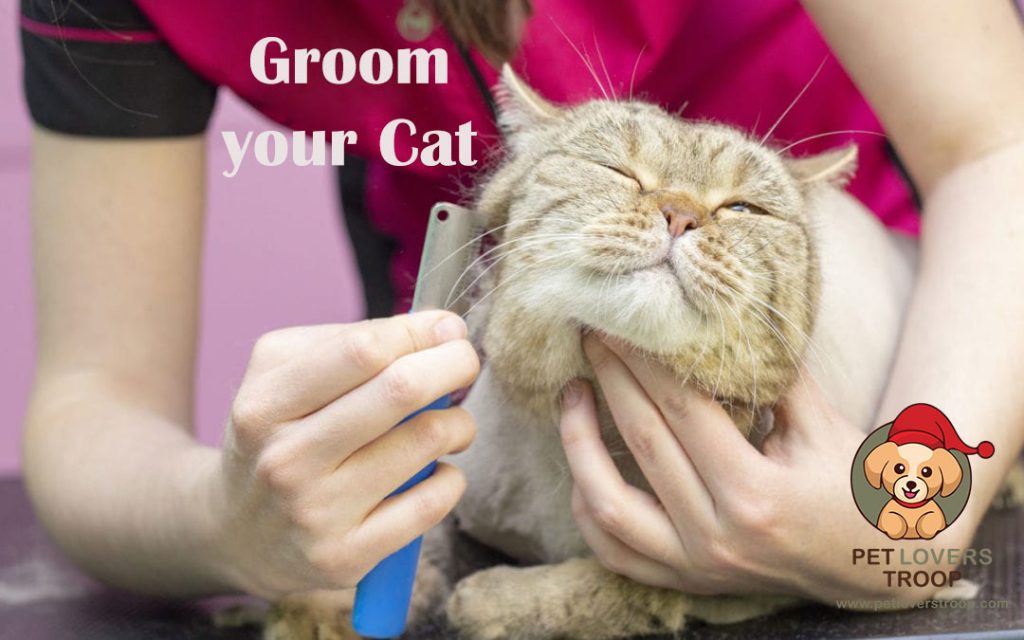
Cat and hairballs have a direct relationship. Cats are already very good at grooming themselves; however, excess loose hair can cause them trouble. Regularly brushing your cat’s fur can reduce hair shedding and prevent frequent hairballs.
Read More: Dog neutering surgery- What to expect and how to handle your male furry friend
You can use an appropriate comb or brush, keeping in mind your cat’s coat type. If you have a short-haired cat, try to brush them at least once a week. But if you have a long-haired cat, brush them twice or thrice a week.
Pet them with Grooming Gloves
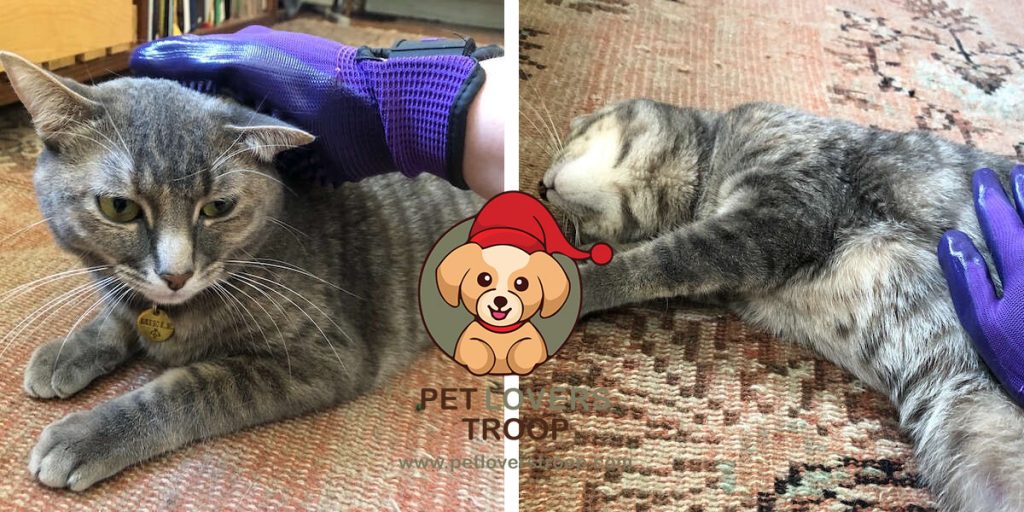
Not all cats enjoy brushing. If your cat is also one of them, use grooming gloves while brushing them. These pet-friendly gloves have soft, stretchy rubber bristles that won’t irritate their skin. Before using the glove, ensure your cat is comfortable and relaxed. Start by gently stroking your cat to make them feel at ease. Now pet them gently in circular motions to remove excess loose hair. Pay special attention to areas with long hair, such as their tummy or the area behind their ears. Once done, use baby wipes or a moist cloth to pacify them, and don’t forget to reward them.
Give them a balanced diet
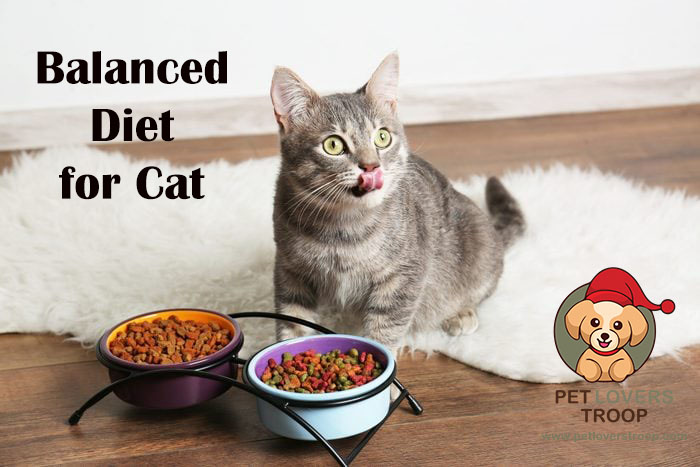
Feeding your cat a balanced diet, including fiber, can help prevent hairballs and aid them in maintaining a healthy digestive tract. Although cats have different dietary preferences from humans and omnivorous animals, they require extra fiber to help the hair pass through their digestive system with no trouble. Some foods with rich fiber values may include apples, pumpkins, cat grass, carrots, and Metamucil. However, adding too much fiber to their diet can have potential side effects, including dehydration, weight loss, loss of appetite, malnutrition, and bloating.
Keep them hydrated
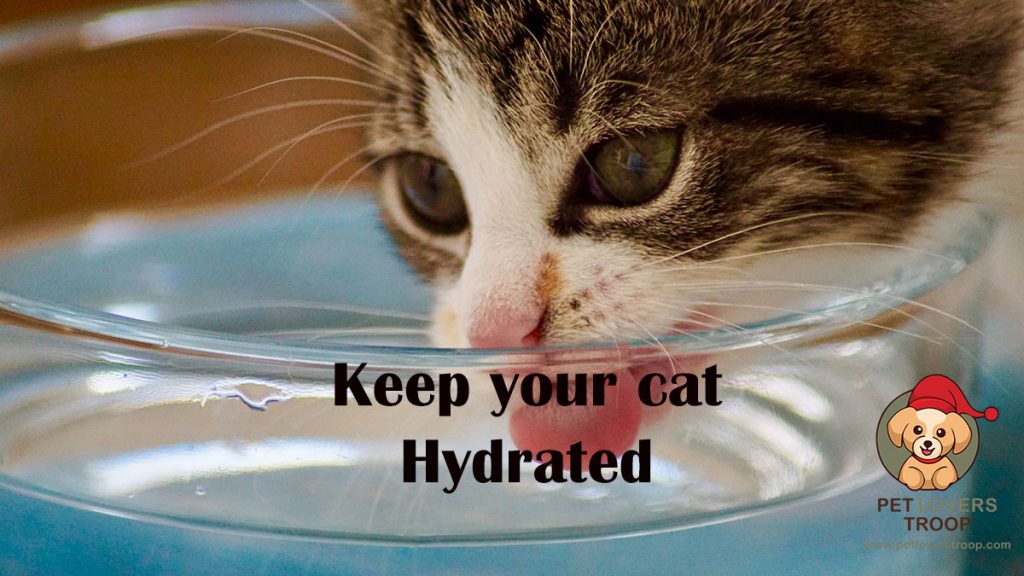
Make sure your cat consumes ample fresh water daily, as dehydration can also lead to the formation of excess cat hairballs. When cats are dehydrated, the moisture levels in their food reduce, making it more difficult to ingest the hair and move it through their digestive tract. It can further increase the hairball deposits in their stomach, resulting in the excessive formation of cat hairballs.
Also, when dehydrated, cats produce less saliva, which further reduces the efficacy of their overall grooming process. When cats don’t groom themselves regularly, they tend to swallow more loose hair, increasing its accumulation in the digestive tract. A dehydrated cat is more likely to suffer from constipation, as hairballs get trapped in the colon and are eventually removed through vomiting.
Exercise can help
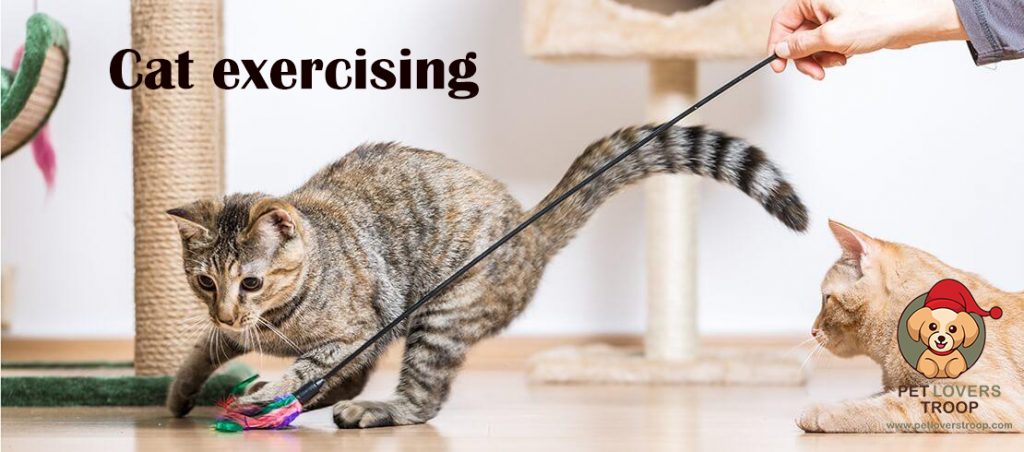
An active cat is likely to amass hairballs in their digestive tract. Exercise stimulates digestion, helping the food and hairballs move through the tract easily.
Read More: What to Do About Hairballs in Cats
It also reduces the stress from regular grooming, encouraging them to relax and stay alert and active. Exercise also promotes hydration in cats, as they drink more water, which is vital to remain healthy and fit.
Offer hairball remedy products
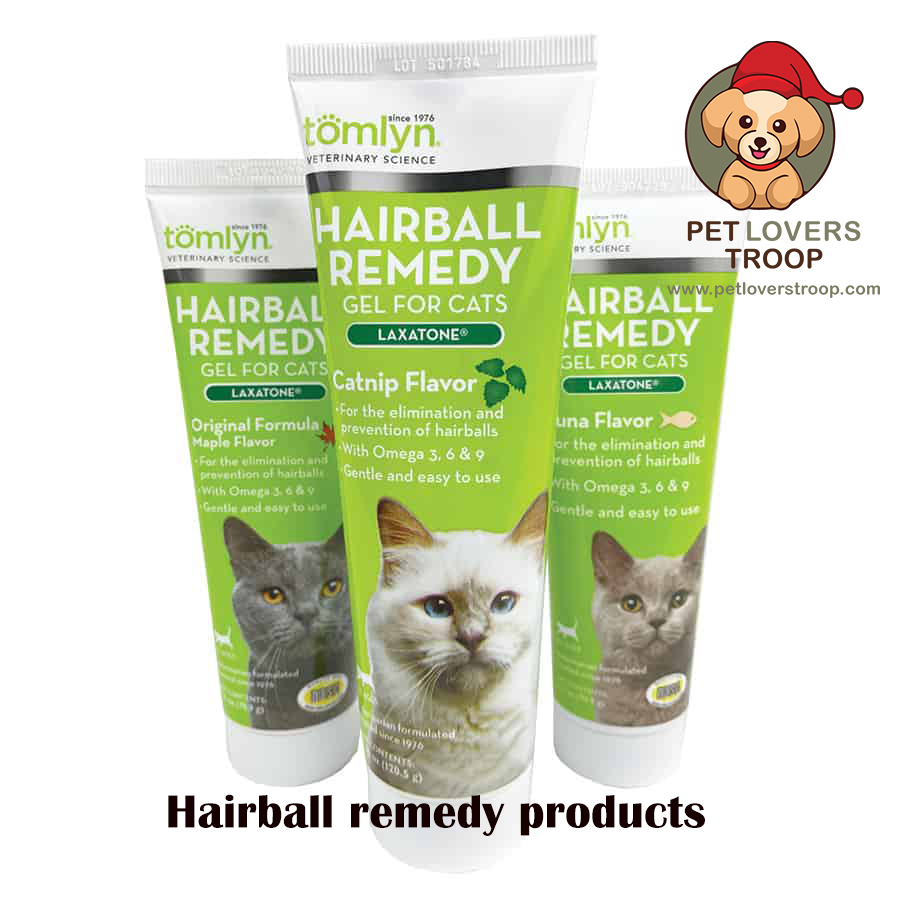
Hairball remedy products can also reduce the formation of hairballs in cats. These treats usually include fiber, which helps the cat to pass the hairballs easily. However, remember that there are better approaches than relying on these treats. Exercise, regular grooming, and a balanced diet are best to improve the overall results. Also, some treats may contain contents that can be harmful to your cats, so it is better to consult your vet before feeding them to your furry partner.
Home Remedies to Manage Hairballs in Cats
The digestive system plays a vital role in your cat’s overall well-being, as difficulty ingesting food or hairballs may lead to lethargy, stress, and uneasiness. Remember that your cat having an occasional hairball is normal; however, the formation of excessive hairballs indicates that their digestive system is not working properly. A healthy digestive system excretes well with the help of good bacteria vital for passing harmful and toxic materials from the body.
You can easily manage cat hairballs on your own. Groom your cat regularly to avoid the buildup of hairballs in the first place. Several commercial diets are available in the market to prevent cat hairballs. However, adding a small number of canned pumpkins to your cat’s diet can regulate their bowel movement.
You can also use gels, pastes, and treats as a hairball remedy. These useful products act as a lubricant but must be used after consulting your vet. You can also incorporate oils in their diet, such as a teaspoon of melted room temperature butter or olive oil, once a week. Give them small amounts of canned sardines and tuna, so they can naturally pass out their hair.
Bear in mind that large buildups of cat hairballs can create a blockage which may require a surgical intervention. Immediately visit your doctor, if your feline:
- Faces difficulty in vomiting or pooping
- Coughs repeatedly
- Looks tired or lethargic
- Is bloated
- Has lost their appetite and won’t drink water
Hairball Medicine for Cats
You can find a wide range of cat hairball medicines in your local pet store or online. The following are some prominent ones:
- Laxatone- a petroleum-based gel or paste
- Hairball Relief Plus- contains mineral oil, petroleum, and psyllium husk
- Cat Lax- flavored, white petroleum gel
- Tomlyn Hairball Remedy- contains soybean oil, petroleum, and psyllium husk and is available in the form of gel, paste, and chews
- Nutri-Vet Hairball Formula- contains psyllium seed husk, fish oil, soy protein, and lecithin
Always consult your vet before using any of these gels or lubricants.
What is the Difference between Cat Hairball and Cough?

A cat’s hairball and cough are different; however, they may seem similar to one another in the first place. A cat hairball, as mentioned previously, is a clump or wad of hair that amasses in the cat’s stomach due to its grooming process. Cats are very fussy when it comes to their grooming and usually lick their fur to keep themselves neat and clean. However, they ingest some loose hair during the process, which can accumulate in their digestive tract, causing cause frequent vomiting, gagging, and retching.
A cat cough, on the other hand, is a sudden and forceful release of air from the lungs that has a peculiar sound to it as well. This coughing can result from various reasons, including heart disease, allergies, asthma, and other respiratory infections. It is usual for a cat to cough once or twice; however, if they repeat coughing for several minutes, they require immediate attention.
Besides, coughing cannot expel hairballs from your cat’s digestive tract. Cat hairballs can only be removed through vomiting or surgical intervention, in severe cases. Sometimes, it might be difficult for you to differentiate between coughing and vomiting, but remember that vomiting usually involves retching and gagging motions by the cat. In contrast, coughing involves a strong and unusual sound directed from the lungs.
Can Dogs Get Hairballs?
Hairballs are mainly attributed to cats, but in some cases, dogs can also develop hairballs in their digestive tract. It happens when your dog sheds their long hair, causing similar symptoms to that of cats, including frequent vomiting, loss of appetite, and gagging. They also risk developing trichobezoar, resulting from their hair or the ones in the environment.
Dogs usually excrete hairs in their feces; however, a large deposit of hair might get tangled in their stomach or intestine. They can either vomit it out or amass them in their gastrointestinal tract resulting in a blockage or obstruction.
Read More: My Dog Sounds Like He Has a Hairball — Now What?
To sum up, hairballs are more common in cats than dogs because dogs have a well-developed digestive system that is more apt to break down hairballs and foreign objects than cats. However, if you suspect your dog is struggling to vomit out a hairball or is experiencing any of the above symptoms, immediately take them to a vet for a proper medical examination. The vet may recommend an X-ray or ultrasound to determine if there is any blockage in the intestinal tract.





